A look at the month’s best reviewed crime novels, mysteries, and thrillers.
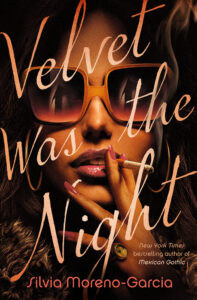
Silvia Moreno-Garcia, Velvet Was the Night
(Del Rey)
“Throughout her career, the style-shifting novelist Silvia Moreno-Garcia has demonstrated a remarkable ability to employ the tropes of genre fiction while simultaneously subverting and decolonizing them … Velvet Was the Night her riveting new noir, is an adrenalized, darkly romantic journey set during Mexico’s Dirty War … Moreno-Garcia keeps us guessing … Moreno-Garcia always leaves her own indelible stamp on any seemingly familiar genre.”
–Elizabeth Hand (The Washington Post)
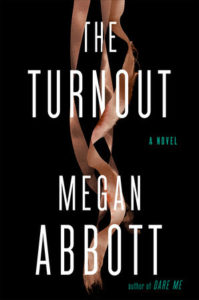
Megan Abbott, The Turnout
(Putnam)
“Desire and ballet are entwined in a smoldering pas de deux throughout this tightly choreographed thriller … Anyone who has ever attended a performance of Tchaikovsky’s famous ballet will enjoy the myriad references to Dewdrops, Snowflakes, mice and toy soldiers as the novel whirls along … Abbott’s interpretation of Clara/Marie as an adolescent riven by erotic awakenings is cleverly based on Hoffmann’s story … At times, the plot’s inevitable murder, sexual intrigue and family secrets seem almost incidental to the auditions and rehearsals, the bickering dancers and complaining parents, the punishing toe shoes and pulled muscles. Though it’s soon apparent that The Turnout is as much about female rage, jealousy and sexual desire as it is a suspense novel set in a dance studio.”
–Suzanne Bern (Washington Post)

Jonathan Santlofer, The Last Mona Lisa
(Sourcebooks)
… provocative … As the story switches between Luke’s increasingly bloody investigation and Vincent’s heart-wrenching story, Santlofer brings unique expertise to this vigorously detailed story … Suspenseful, lush with Florence’s glorious art and architecture, sexy, and emotionally complex, Santlofer’s multifaceted tale of how a passion for art can turn criminal contrasts the genuine with the fake and asks if beauty and love can truly be transcendent.”
Donna Seaman (Booklist)

Kotaro Isaka, Bullet Train
(Overlook Press)
“It’s a thriller called Bullet Train by the bestselling Japanese writer Kotaro Isaka. Zippily translated by Sam Malissa for The Overlook Press, this is one novel that lives up to its title. Fueled by a seductively explosive premise, it’s fast, deadly and loads of fun … Isaka neatly deploys his locomotive setting—everything from the luggage racks and toilets to the train’s occasional stops—to keep his characters, and us, guessing … Isaka isn’t trying to express some grand cultural idea. He wants to give us the irresponsible pleasure of sheer entertainment. And he does. At once outlandish and virtuoso, Bullet Train is like one of those dazzling balance beam routines that keep you hoping the gymnast will stick the landing.
John Powers (NPR)
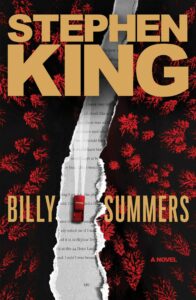
Stephen King, Billy Summers
(Scribner)
“… a dazzlingly shapeshifting novel that, like its antihero, only pretends to be easy to pigeonhole … Handling each genre with unshowy aplomb, King creates a kind of ‘Best Of’ album of his (non-fantasy) work, given cohesion by Billy’s story. As it’s neither overlong nor overfull of adorably quirky kids, Billy Summers is also set apart by being free of the self-indulgent tendencies of his recent output. Disciplined but adventurous, equally good at action scenes and in-depth psychology, King shows with this novel that, at 73, he’s a writer back at the top of his game.”
–John Dugdale (The Sunday Times UK)

Naomi Hirahara, Clark and Division
(Soho Crime)
“… provocative … Although [Hirahara] skillfully integrated historical events in many of her previous titles, her 10th novel incorporates three decades of researching and collecting the oral histories of Americans imprisoned for being of Japanese heritage … While Clark and Division is currently a standalone endeavor, Aki Ito shows plenty of intriguing tenacity to star in a series of her own. Readers are sure to agree.”
–Terry Hong (Shelf Awareness)
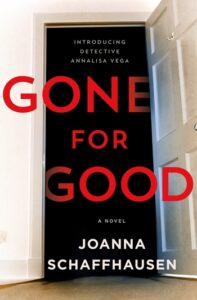
Joanna Schauffausen, Gone for Good
(Minotaur Books)
“Schaffhausen, who has a doctorate in psychology and previously worked in broadcast journalism, uses her expertise to delve into the minds of her characters, extracting their hopes, desires and fears in equal measure. The author brilliantly explores Annalisa’s emotional connections with the characters around her … Chapters told from Grace’s perspective are cunningly interspersed with Annalisa’s traditional gumshoe detective work, yielding additional insights along the way. While Schaffhausen throws in a few red herrings, all the clues are there for readers if they pay keen attention. And even if readers should figure things out ahead of Annalisa, the action-packed ending and final twist are more than worth seeing Gone for Good to its finish.”
–G. Robert Frazier (Bookpage)

Louise Penny, The Madness of Crowds
(Minotaur)
Timely and thrilling, this 17th entry is one of the series’ most rewarding … satisfying both as an intricate crime-solving procedural and as an opportunity to revisit Three Pines, the community Penny has built, story upon story, since Still Life in 2005 … satisfying both as an intricate crime-solving procedural and as an opportunity to revisit Three Pines, the community Penny has built, story upon story, since Still Life”in 2005 … The mystery may be the main course, but the side dishes — the food for thought, and the food at the Bistro; the people and their lives and, yes, loves; and certainly the setting itself — combine to create a full banquet for readers, one liberally seasoned with dry humor. The Madness of Crowds is one of the richest and most satisfying banquets yet.
–Gail Pennington (St. Louis Post-Dispatch)
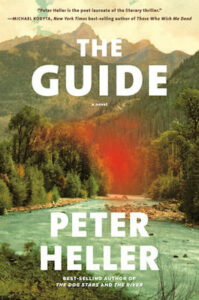
Peter Heller, The Guide
(Knopf)
“Peter Heller takes readers on another thrilling wilderness adventure in The Guide … Heller is an expert at building suspense, and he’s a first-rate nature writer, lending authenticity to the wealth of wilderness details he provides … He also uses a notable layout technique—adding space between each paragraph—that makes readers turn his thrilling pages even faster. One warning, however: Heller’s novels…are not for the faint of heart. Still, The Guide is a glorious getaway in every sense, a wild wilderness trip as well as a suspenseful journey to solve a chilling mystery.”
–Alice Cary (Bookpage)
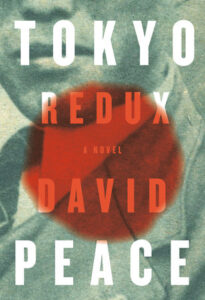
David Peace, Tokyo Redux
(Knopf)
“Connections are suggested with the 1948 Teigin poisonings central to Occupied City, and there are hints of a tantalising web of complicity, but we don’t actually learn what really happened with Shimoyama. Peace writes crime fiction in name only; ‘whodunit?’ is a question entertained, then relinquished, and for all his paranoid speculations, Peace stays faithful to the inscrutable mystery of each of these historic cases, unresolved to this day. His prose is braided with actual press headlines running for pages on end … The details are meticulously researched, down to the dying emperor’s Mickey Mouse wristwatch. The effect is one of transfixing veracity … Repetition and rhyme, trusted Peace techniques (some might say tics), give the prose an incantatory rhythm and an epic feel. This often drifts into bathos … Japanese is a distinctively onomatopoeic language; sense is conveyed by approximating the sound of things, feelings, even ideas. Peace channels this phonetic quality, coining leitmotivs to stress his key themes … Many novels are hyped as ‘polyphonic’, but Peace’s now complete Tokyo trilogy truly is, brilliantly summoning forth multiple voices in the soundscape of a city gripped by seismic change.”
–Tanjil Rashid (The Guardian UK)


















